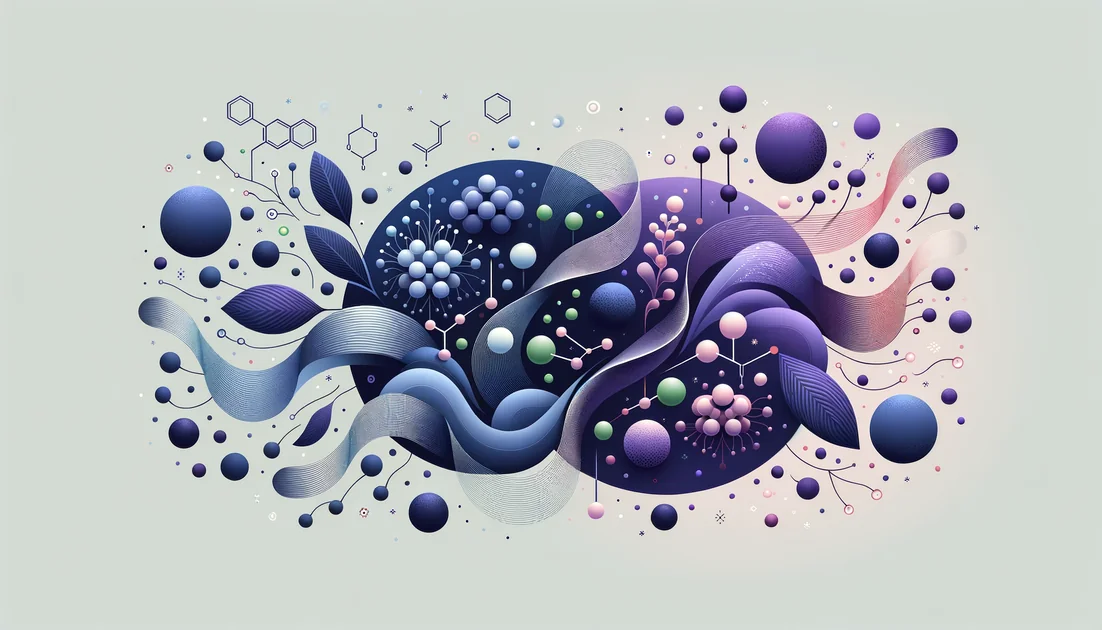
From Beef Tea to Brain Fuel: The Many Lives of Creatine
A French chemist boiled beef in the 1830s and pulled out a crystal he named after κρέας—meat. Nearly two centuries later, the same molecule is helping sprinters hold speed, older adults keep their legs, and researchers probe fatigue in the brain. How did a kitchen-sounding extract become one of the most validated—and misunderstood—tools in modern health?
- Evidence
- Robust
- Immediate Effect
- Within days with loading; otherwise gradual → 3–8 weeks (with consistent training)
- Wears Off
- ~4 weeks after stopping
Sparks in the muscle, echoes in history
In 1832, Michel Eugène Chevreul isolated a new substance from meat and called it creatine—"of flesh." It sat in the background of physiology for decades until the 1920s, when scientists discovered phosphocreatine, the body's rapid-response energy reserve. Think of it as a rechargeable battery pack that snaps onto ATP—the energy coin your cells spend every second—and refills it in bursts when demand spikes. Later, a Swedish team showed that simply swallowing creatine could raise the muscle's stores, like topping up a power bank before a race. Within five days of 5-gram servings, human quadriceps held markedly more creatine—sometimes 20–50% more—especially in those who started low. [1][2][3]
What it actually does (without the jargon)
When effort surges—standing from a chair, finishing a hill, bracing a suitcase—the body burns ATP in milliseconds. Creatine's job is to hand ATP a spare phosphate so it can reform instantly. More creatine on the shelves means more split-second energy before the "burn" arrives. In repeated-sprint and strength tests, that translates into holding power deeper into the set, squeezing out extra reps, or slowing the fade across sprints—small advantages that compound over weeks of training. [4][5][6]
The broadening circle: beyond the weight room
The first surprise is age. A meta-analysis in older adults found that adding creatine to resistance training improved strength and lean mass versus training alone. More recent analyses extend this to day-to-day function (faster sit-to-stand), with the effect clearest when creatine partners with lifting. As one clinician put it in a February 2025 feature: "Certainly, if you're not doing any resistance training, I wouldn't bother taking creatine." [7][8][9]
The second surprise is blood sugar. In a 12-week randomized trial of people with type 2 diabetes, five grams of creatine per day alongside exercise lowered HbA1c by about 1.1 percentage points compared with placebo—likely by helping muscles pull in more glucose during training. [10]
And the brain? Here the story shifts from certainty to curiosity. Under stress—sleep loss or low oxygen—creatine acts like a backup generator. In controlled trials, supplementation blunted the attention and mood decline after 24–36 hours without sleep and restored cognitive performance under hypoxia, consistent with the brain drawing on that extra energy reserve. "The brain already uses creatine for its great energy demands," notes exercise physiologist Eric Rawson. "Supplemental creatine could add to the energy reserve." [11][12][13]
Real people, real trials
In women with major depression starting an SSRI, adding 5 g/day of creatine led to faster and greater symptom improvement, visible by week two and sustained through week eight, versus placebo. It's an early but eye-catching hint that shoring up cellular energy can help mood treatments work quicker. [14]
In a randomized pilot in children and teens with traumatic brain injury, six months of creatine was linked to shorter ICU stays and better cognitive and behavior scores compared with controls—preliminary, but human data that keeps the neuroprotective question open. [15]
For long COVID, small trials suggest creatine replenishes depleted muscle and brain stores, with signals for less fatigue and better exercise tolerance when paired with other therapies. It's not a cure, but it marks a frontier. [16][17][18]
Myths that refused to die—and what the data says
"Creatine dehydrates you and causes cramps." In multi-season NCAA football data, users had lower or similar rates of cramping, heat illness, and total injuries than non-users. Other cohorts echo the finding. [19][20]
"It wrecks your kidneys." High-quality reviews—including a meta-analysis in the Journal of Renal Nutrition and a 2023 narrative review—find no evidence of renal harm in healthy users at studied doses. Serum creatinine can rise a little—but that lab number partly reflects the supplement itself, not kidney damage. [21][22]
"It makes your hair fall out." A 2009 rugby study linking creatine to higher DHT seeded the rumor. A 12-week randomized trial directly measured hair parameters and found no differences between creatine and placebo; clinicians stress the evidence does not show creatine causes baldness. [23][24]
"The current body of evidence does not indicate that creatine causes hair loss." —Jose Antonio, PhD, sports nutrition researcher. [24]
How to use it in real life
For most healthy adults, creatine monohydrate is the form to choose—well-studied, inexpensive, and effective. Two on-ramps work:
Load 20 g/day split into 4 doses for 5–7 days, then 3–5 g/day to maintain. You'll feel the performance edge within days. [3]
Or, skip loading and take 3–5 g/day; muscles fill more gradually over ~3–4 weeks. [6]
Take it with a meal or post-workout to reduce stomach upset. Look for third-party tested products (e.g., NSF Certified for Sport or equivalent). If labs are being monitored, tell your clinician you're supplementing—creatinine may tick up without indicating harm. And remember the pairing lesson: the biggest day-to-day wins show up when creatine rides alongside resistance training. [8][25]
The longer view
Creatine isn't a cure-all; it's a battery. For younger athletes, it helps you hold power. For older adults, it can make training work a little harder for you. For metabolism and mind, the evidence is promising in specific contexts (exercise with diabetes; stress-tested cognition; select mood disorders) and emerging elsewhere. Muscle stores fade back to baseline about four weeks after stopping—like a power bank slowly self-discharging—so benefits ebb if you do. [6]
If there's a philosophy to borrow from creatine's past, it's this: energy is a currency of capability. From Chevreul's benchtop crystal to modern hospital wards and home gyms, we're still learning when topping up that cellular wallet matters most—and how to spend it well. [1][14][15]
Key takeaways
- •Creatine tops up the phosphocreatine "battery," rapidly refueling ATP during high-demand efforts for stronger, repeated performance.
- •Five days of 5 g servings can raise muscle creatine substantially (often 20–50%), especially in people starting with lower stores.
- •Best results show up alongside resistance training—particularly in older adults where strength and functional gains are the goal.
- •Use creatine monohydrate: either load (20 g/day split for 5–7 days, then 3–5 g/day) or take 3–5 g/day consistently without loading.
- •Take with meals or post-workout to reduce GI upset; vegetarians/vegans and adults 50+ often stand to benefit most.
- •Creatinine on blood tests may rise without indicating kidney harm; tell your clinician you supplement so labs are read correctly.
You might also like
Explore more of our evidence-led investigations, comparisons, and guides across every article style.

Puritan's Pride
Puritan's Pride: Industry-grade manufacturing meets discount pricing—so why is transparency still the weak link?



Colloidal Silver
A century ago, a single drop of silver in a newborn's eye could mean the difference between sight and blindness. Today, the same metal is bottled and sold online as a cure-all—yet the science tells a very different story.


Tocotrienols
The stealthier cousins of vitamin E—built with springy tails that move differently in cell membranes and behave differently in your body.
